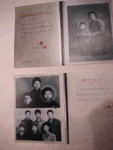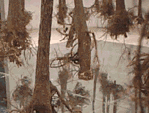| "The Pond Strikes" | 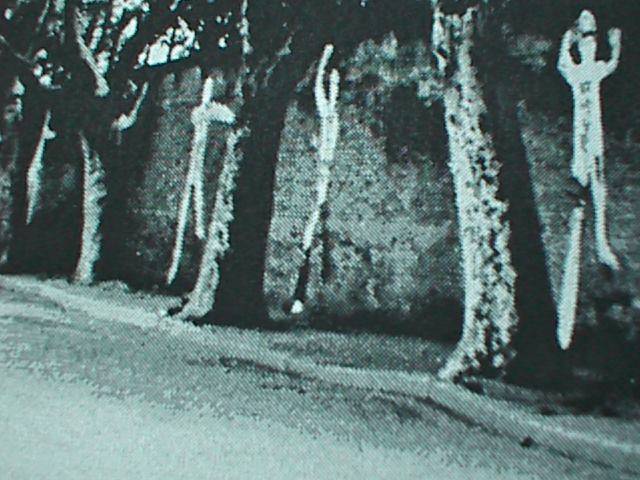 |
| In 1986 a group of young artists called "The Pond" carried out a secret action. Late one night they painted Tai Chi dance figures on a wall near the National Academy. The next morning exercisers who gather daily to practice Tai Chi were astonished to see their moves depicted on the wall. |
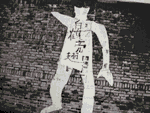
|
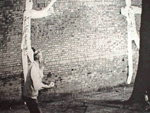
|
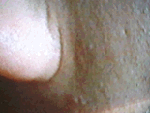
|
"Eating" (1997) | |
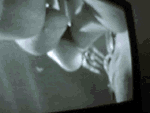
|
Shot with a camera taped to the eater's wrist - the disorienting perspective turns eating into a surreal event. | |
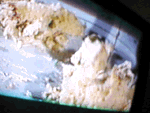
|
| The installation Eating details three points of view. The top monitor focuses on ear movement during chewing, and the base monitor shows a knife and fork attacking a piece of cake. These composed, fairly static shots are in color. Separating them is a black and white action view of the cake traveling from plate to mouth. Shot with a camera taped to the eater's wrist - the disorienting perspective turns eating into a surreal event. The delivery of morsels to a gaping mouth seems appropriate for predators living at the bottom of the sea. You can catch Zhang's work at "Cities on the Move" in Vienna, November 1997, and at the Guggenheim's "Five Thousand Years of Chinese Art" opening in February 1998.
|
| The Negative Needs of Reality |
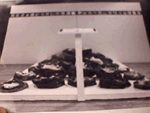
|
| In the summer of 1995, Geng joined 26 international artists in a three week workshop at Art/OMI in upstate New York. In Geng's installation, an ironic comment on art production, each artist's completed work is represented by a photo in a line of images along the rear wall of his installation. On the platform in the foreground are twenty-six large plastic bags filled with the artists' refuse. In keeping with his commitment to documentation and parody of due process, Geng secured signed releases for the garbage and photos. These too are an integral part of his installation. | In keeping with his commitment to documentation and parody of due process, Geng secured signed releases for the garbage and photos. |
